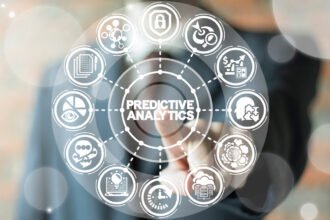CAN was started in 2008 , to make predictive analytics applicable and accessible to businesses
CAN was started in 2008 , to make predictive analytics applicable and accessible to businesses of almost any size. We are working diligently because predictive analytics has the unique potential to allow executives to scale their decision making as organizations become increasingly more complex with ever thinner margins for error. For example small businesses are now having to compete around the world as if they were multinational companies, and multinational companies are having to develop and deliver products and services to ever more fragmented consumers as if they were small businesses.
Introduction to Predictive Mathematics
Predictive mathematics is different than other Business Intelligence tools because it goes beyond visualizing data and human assumptions, instead it combines data, theory and math to make forecasts about the future using current and historical facts. While executives and decision makers also analyze current and historical facts to make forecasts about the future, what separates executives from predictive mathematics is predictive mathematics ability to find detailed relationships from hundreds of possible variables and millions of observations, and also produce an estimate of the error of the prediction. Predictive mathematics is able to tell you that a independent variables, e.g. males, has a .3% impact on a dependent variable with 95% confidence. While executives and managers still have to make the final decisions, predictive mathematics can provide insight that isn’t possible with other business intelligence technologies.
A Brief History of Predictive Analytics
It wasn’t until the middle part of the last decade that we had the combination of mathematical techniques, data storage capacity, data processing power and data creation that we need to make predictive analytics accessible to businesses of all sizes. The mathematical techniques have existed and improved since the founding of the Econometric Society in 1930. The data storage capacity has been around since 1977 with Oracle’s commercialization of the relational database. The processing power has existed since IBM commercialized business computing with the IBM 360. SaaS and Social Media provided the final requirement, data creation. Both of these technologies have made is common and inexpensive for people to quickly and easily collect and publish information about their lives and jobs.
The Limitation of Predictive Analytics
Predictive mathematics is not without flaws and if people become over reliant or trusting of predictive models you can have disasters such as the subprime mortgage crisis. To avoid hubris and ensure that our customers can trust our models, CAN has developed the philosophy of Less Wrong and the CAN Three-Way Test.
The philosophy of Less Wrong is that the goal of every model that we produce is to make our clients less wrong than they were, but not to assume that we will ever make our clients 100 percent right. In business their are often clear winners with clear metrics such as profit keeping score. However, no business is ever perfect, the winners are only Less Wrong than their competitors. Also, business success and failure is only temporary. The ability to help companies continually become less wrong is what attracted CAN to predictive mathematics. By combining data, theory and mathematics CAN helps develop predictive models to help our clients make decisions that are Less Wrong.
Our philosophy of Less Wrong has allowed us to develop business model that allows us to quickly and inexpensively provide results to our clients. Similar to Software as a Service (SaaS) we provide Analytics as a Service on month-to-month contracts, and we use our ongoing relationships to continually help our clients becomes Less Wrong. While we provide our clients with results within the first 30 days, we are continually improving and adapting our systems to an ever changing business environment.
While the philosophy of Less Wrong helps to establish reasonable goals and allow room for continual improvement, our models provide the foundation of our client’s business, and so we work hard to make sure that our models reflect reality so that they generate reasonable predictions. One of the best ways that we do this is the CAN Three-way test. The CAN Three-way test requires that each model we produce can be backed up with theory, data and math.
- The Theory: Without a sound theory, you have to rely on randomness, and randomness decreases the long-term usefulness of the model. CAN relies on the expertise of our clients executives, managers and employees to build the theories around our models.
- The Data: CAN makes sure to fully understand your data, because data is the raw materials used to build predictive models. CAN will examine patterns in your data to determine which equations to use to model your data, and also determine the quality of your data. CAN is able work with imperfect data, we just make sure that we understand the flaws and limitations of your data, such as potential bias etc.
- The Math: CAN’s analysts go through hundreds of different models to select the right one that fits the data as well as the theory. This doesn’t mean that we always select the equation that has the best line fit, but instead the equation that fits both the data and the theory.






